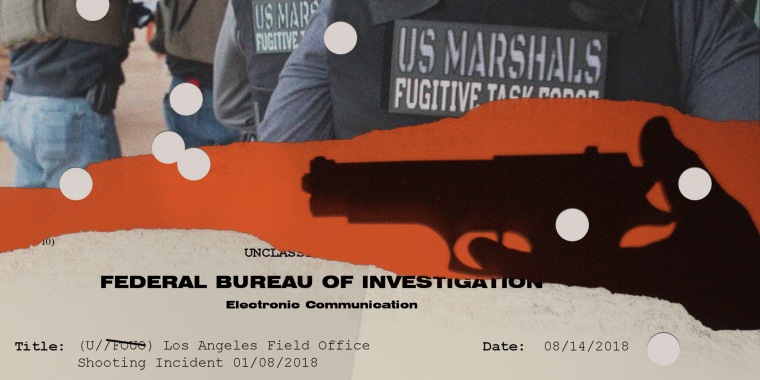During an early Friday dinner rush in 2020, shots rang out as teen workers at a Texas Roadhouse outside Detroit took to-go orders to customers in the parking lot. Bullets whizzed overhead as people ducked for cover, witnesses said. Stray rounds hit parked vehicles, a restaurant window and a wall, photos show.
Earlier that day, FBI agents had decided to arrest a man suspected of having ties to a domestic extremist group on federal weapons charges outside the steakhouse.
When the gunfire stopped, an agent had been shot in the hip and the suspect was dead — having bled out just feet from the restaurant’s entrance, according to local police reports and video.
An employee who was preparing food inside when the shooting began recalled a bullet passing inches from her head. “It was the most horrifying experience I’ve ever had in my life,” she said.
The Untouchables: NBC News investigates how federal law enforcement officials are able to harm people with little to no accountability.
In 2021, bullets flew outside a 7-Eleven during a Bureau of Alcohol, Tobacco, Firearms and Explosives operation in Colorado Springs, Colorado. The same year, U.S. Marshals fired shots inside a barbecue restaurant in the Chicago area, and a firefight erupted during a Drug Enforcement Administration search aboard an Amtrak passenger train in Tucson, Arizona.
Three suspects and a federal officer were killed in the four incidents. Another suspect and three officers were injured. Miraculously, no bystanders were struck.
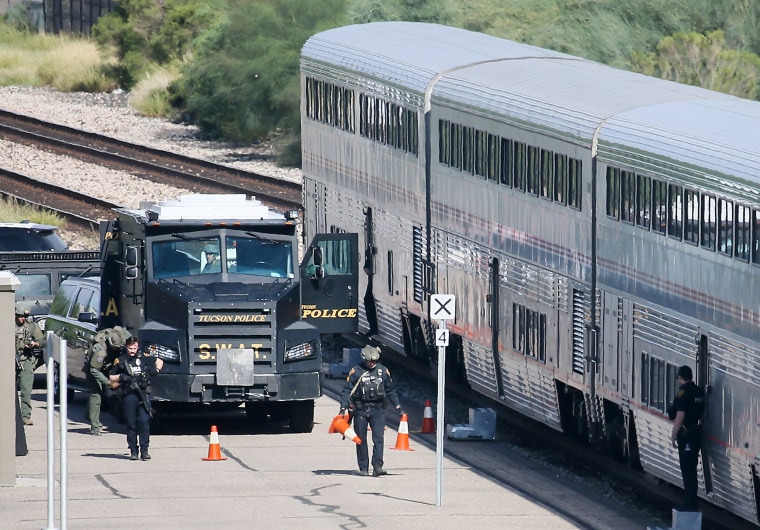
Had they been local police shootings, they might have generated public demands to release body camera video and use-of-force investigation reports. But they were federal operations, conducted by agents and task forces with four federal law enforcement agencies — the FBI, the ATF, the DEA and the U.S. Marshals Service — in which the use of force remains largely a black box, free from public scrutiny.
Congress and a string of presidents for nearly 30 years have been pushing federal law enforcement to reform and become more transparent. But those four agencies overseen by the Justice Department, among the most prestigious in the country, have been slow to adopt reforms long embraced by big-city police departments, such as the use of body cameras and the release of comprehensive use-of-force data.
To understand how often federal officers and their task forces use deadly force, NBC News built a database of shootings that involved officers working for or with the ATF, the DEA, the FBI and the Marshals Service by reviewing five years’ worth of public documents, news releases, lawsuits and news reports.
From 2018 to 2022, 223 people were shot by an on-duty federal officer, a member of a federal task force or a local officer participating in an operation with federal agents, according to an NBC News analysis. A total of 151 were killed, an average of 30 per year.
Examinations of the incidents revealed that the Justice Department’s law enforcement agencies continue to use tactics that many big-city police departments now shun. They have fired at moving cars and shot people within seconds of encounters — without taking steps to de-escalate the situations.
Some federal law enforcement practices have generated disputes with local police chiefs, in addition to civil rights leaders, who question why federal officers aren’t held to the same standards as state and city law enforcement officers.
Although the Justice Department has forced local law enforcement, like the Baltimore and Los Angeles police departments, to reform, its own agencies are legally exempt from similar oversight. The use-of-force data the Justice Department agencies publish is so limited that it is hard to determine who was shot, why, when and by whom.
President Joe Biden has been pushing for reforms, and during his administration, the Justice Department has updated its use-of-force policy for the first time in nearly 20 years. The department now requires its officers to intervene when they witness excessive force and limits the use of so-called no-knock warrants and other controversial tactics.
“The Department of Justice recognizes the importance of transparency and accountability in its law enforcement operations," Peter Carr, a department spokesperson, said in a statement.
He added that the use-of-force policy was updated to "ensure it parallels the best practices of federal, state and local law enforcement” and that the Justice Department is committed to "full implementation" of body cameras for its agents.
But some of the department's toughest critics remain its former leaders, who say Biden's reforms aren't enough. Federal law enforcement is “the most opaque” of all law enforcement in the U.S., said Jonathan M. Smith, a former section chief in the Justice Department’s Civil Rights Division.
Because of an “inability to actually get basic information,” said Smith, now a civil rights attorney who has sued federal officers for allegedly abusive practices, it can be difficult to influence how the agencies operate or hold them accountable.
“There are no consequences for these federal agencies,” he said. “We often find that they’re engaged in behaviors that either violate the Constitution or that are contrary to the values of a democratic society.”
From small towns to big cities
On any given day, more than 24,000 federal law enforcement officers overseen by the Justice Department are at work across the U.S., conducting surveillance, executing search warrants and pursuing people wanted for violent and nonviolent crimes. Their ranks swell to at least 40,000 once state and local officers who serve on their task forces are added — regular police certified with federal powers and protections while they are working for the ATF, the DEA, the FBI or the Marshals Service.
NBC News’ review found that shootings by officers working for or with those agencies took place in rural towns and big cities, in shopping centers, outside popular restaurants and inside neighborhood stores. They often occurred while federal officers were trying to arrest people or serve warrants, sometimes for low-level crimes. More than 100 of the shootings were investigated by local prosecutors, with only two resulting in criminal charges for officers.
Roughly 14% of the people shot were wanted on low-level charges such as violating probation. At least 44% were wanted in connection with serious violent crimes, including armed robbery, rape and murder. Many others had warrants for drug crimes and gun possession by a felon. Some were armed and fired first when officers approached. Twenty-two weren't the intended targets of the operations — some of them attacked officers, while a smaller number were bystanders. Nearly 70% of the 223 people officers shot died. Forty-nine officers were also shot, six fatally.
In nearly half of the shootings, multiple officers fired their weapons, and in 47%, at least one federal officer did, NBC News found. Local officers serving on federal task forces fired in a third of shootings, and police without federal powers fired in 14% of them. NBC News was unable to verify the types of officers who fired in a small proportion of incidents.
The majority of people who were killed were shot during U.S. Marshals operations. The Marshals Service is the primary federal agency that goes after fugitives, which officials said is why it has a high number of shootings.
The review was limited to Justice Department law enforcement agencies, excluding the Bureau of Prisons. It didn't examine the Department of Homeland Security, which houses Customs and Border Protection, the country's largest federal law enforcement agency.
Read the full methodology here.
The NBC News analysis found 23 shootings in which officers opened fire during daylight in highly trafficked public places.
In August 2022, members of the U.S Marshals Mountain State Fugitive Task Force felt it would be safest to arrest Jason Owens at his father’s funeral, because it was less likely he’d be armed.
Owens had gone to prison for choking a sheriff’s deputy and had stopped checking in with his parole officer. The task force asked local police to assist in arresting him.
In interviews with investigators afterward, officers at the scene said they watched Owens leave the funeral home as a pallbearer and then moved to arrest him after he helped load his father's casket into a hearse. Owens reached for his 9 mm pistol, officers said.
A local officer assisting the marshals-led task force grabbed Owens’ wrist and then shot him dead — sending mourners scrambling.


His family still questions why officers tried to arrest and opened fire on him at a funeral, where more than two dozen loved ones, including children, had gathered.
“Why do that on that day and ruin a good man’s funeral and put all these babies and us through that?” asked Sabrina Owens, an aunt.
Multiple family members deny that Owens reached for his gun. Evelyn O’Dell, another aunt, said officers shot him seconds after she released him from a hug.
“I felt the bullets,” she said. “I actually thought I was shot.”
Eight months later, Grant County’s top prosecutor said he found the shooting justified. His office didn't respond to requests for comment.
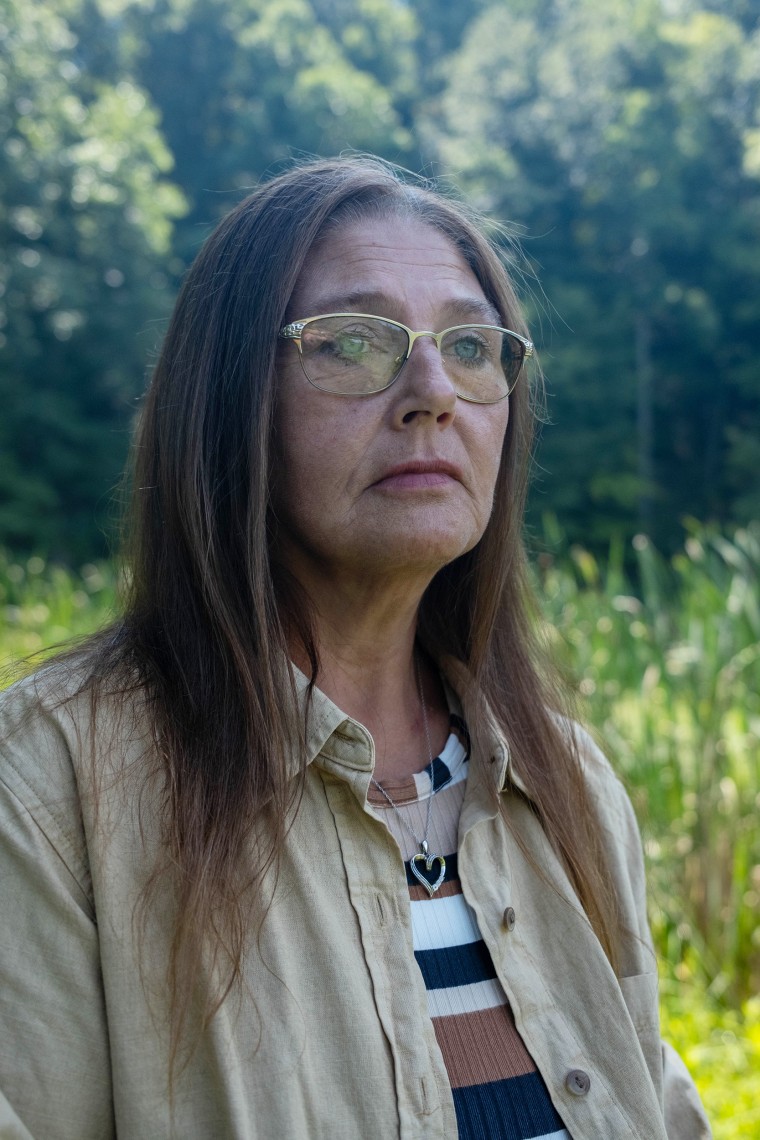
Federal officers often planned arrests and drug buys in public places, like malls and restaurants. At least three DEA shootings happened during undercover buys in shopping center parking lots, including one outside a Florida Bass Pro Shop.
Law enforcement experts say that while all planned operations carry risk, often the most desirable place to apprehend someone is in the open, where officers can establish multiple points of surveillance and better control the scene. The risk that something could go wrong multiplies when they are approaching a private home or building, where officers don’t know what’s behind the front door.
Thor Eells, the executive director of the National Tactical Officers Association, said that while they are planning to make an arrest, officers should conduct a risk assessment in which everyone's safety — including the suspect’s — is considered. And risk can be higher for the kinds of operations those federal agencies conduct, compared to local police.
But Eells, along with several local policing leaders, said tactical training is still lacking at the federal level. “You have these folks that aren’t making the best field operational decisions,” Eells said. “They don’t have the right training and experience combination to be assessing risk appropriately.”
NBC News asked each of the Justice Department agencies to explain its arrest tactics. The U.S. Marshals said they are working on improving how they apprehend fugitives. The DEA didn't respond. Spokespeople for the ATF and the FBI said that they conduct extensive planning before any apprehensions and that public safety is a top priority.
The FBI said in a statement that it follows “DOJ policies for enhanced clarity of law enforcement activities during operations.”
An ATF spokesperson said that “conducting thorough and transparent inquiries are key to holding ATF and our partners to the highest standards.”
The Untouchables: read more of the NBC News federal law enforcement accountability series
- How the Supreme Court has effectively dismantled Bivens claims, lawsuits against federal officials accused of violating constitutional rights.
- How local prosecutors face steep legal barriers in charging and convicting federal officers of murder.
- How families who lose loved ones in shootings involving federal officers have little recourse in the nation’s courts.
- NBC News documented five years of shootings by officers working for or with the ATF, DEA, FBI and U.S. Marshals. Explore the data.
- How a series of Supreme Court rulings allow federal officials from bureaucrats to corrections officers to violate people’s constitutional rights with impunity.
Law enforcement experts also questioned federal officers' practice of shooting at moving vehicles. New York’s and other big cities’ police departments have long banned the tactic. Federal officers with the Justice Department are still allowed to shoot at moving vehicles when their lives are under threat.
Another tactic used frequently by federal officers — particularly the Marshals Service — is to let a suspect get into a vehicle and then try to box it in, often with unmarked police vehicles. In several cases identified by NBC News, officers said they opened fire during attempts to box in vehicles, shooting the drivers, sometimes fatally, out of fear the vehicles were going to hit officers or bystanders.
Current and former big-city police officials questioned why federal officers still use the tactic. Kenneth Corey, an ex-New York police chief of department, said boxing in cars not only is dangerous, but it also requires extensive training to get right. “It’s much easier to just get out of the way and try to apprehend the suspect on another day,” he said.
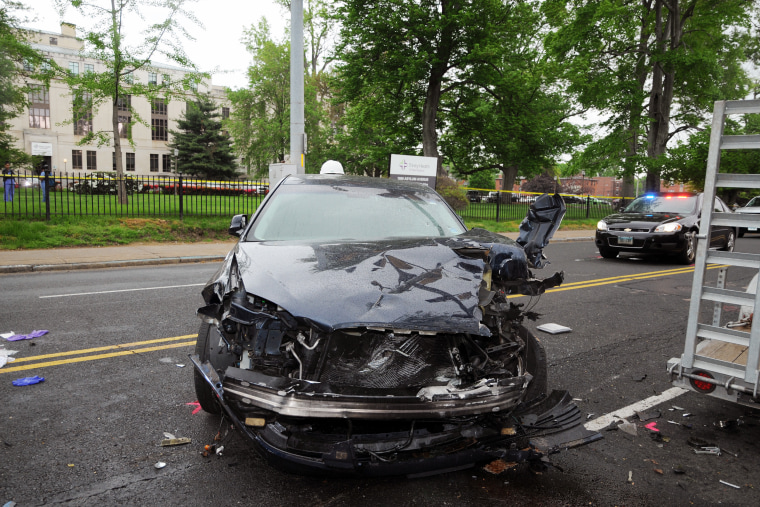
A 2021 investigation by The Marshall Project found that one-quarter of marshals’ shootings involved firing at cars. NBC News found that 44% of shootings involved officers’ shooting at cars. In November, the Marshals Service released their first public shooting review, finding that nearly half their shootings involved officers’ firing at cars.
Ronald Davis, the director of the Marshals Service, said in a statement that the agency is working on improving its tactics to mitigate risks to its officers and to communities. “Reducing deadly encounters for the safety of law enforcement and the communities we serve is a top priority,” he said.
Body cameras
In the past decade, local police leaders have embraced body cameras as crucial accountability and transparency tools, particularly for informing the public when things go wrong. More than 60% of local police departments use the devices, a Justice Department review recently found. But the Justice Department’s own officers rarely wear them, and the agency didn’t allow their use until 2021.
The contrast has led to clashes between the department and big-city police chiefs.
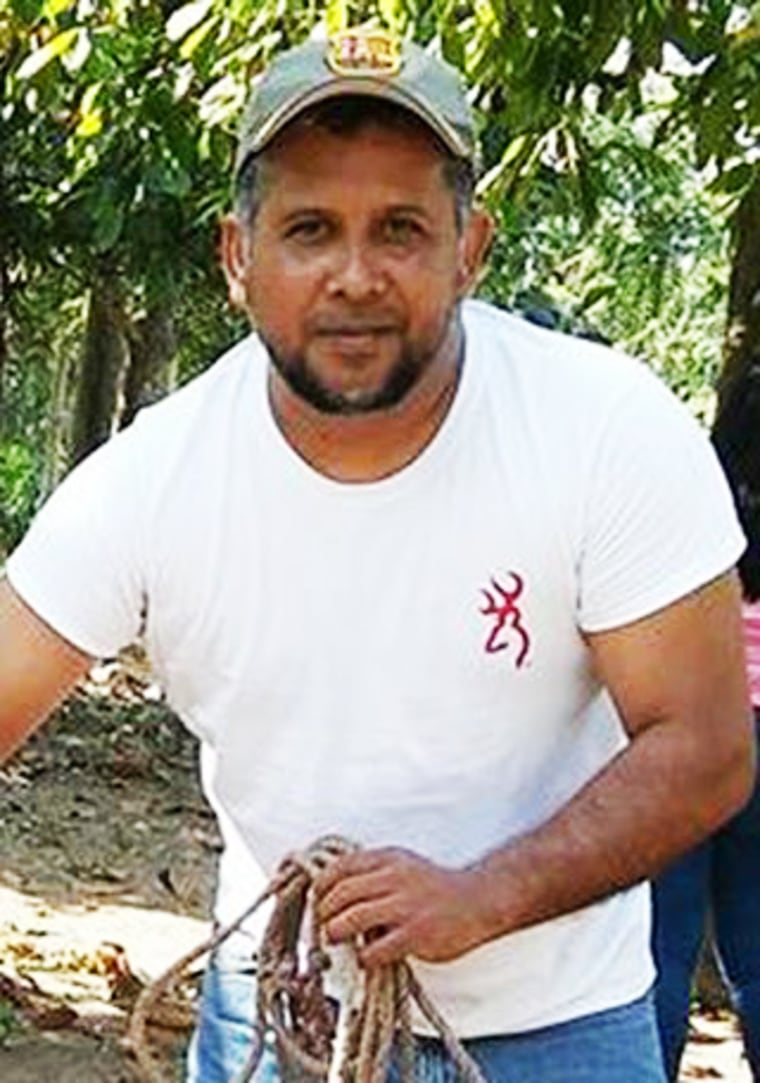
Houston’s 6,000-person police force was an early adopter. In January 2018, as then-Police Chief Art Acevedo was lauding their use, FBI agents shot and killed a kidnapping victim in the city in a rescue gone wrong.
The details of the man’s death remain shrouded in secrecy. Family members still don’t know the name of the agent who killed Ulises Valladares, 47, a father who was abducted over a relative’s unpaid debt.
“He’s still free, like if nothing happened,” said Fidel Valladares, one of the victim’s brothers.
Body camera video could have revealed what happened that night. But none of the officers at the scene was wearing one — they were all federal agents.
An FBI SWAT team tracked Valladares to a house and tried to rescue him. One agent used his rifle butt to break a window. The agent felt someone on the other side grab his weapon and, fearing it would be taken from him and used on other agents entering the house, fired two shots, local police said.
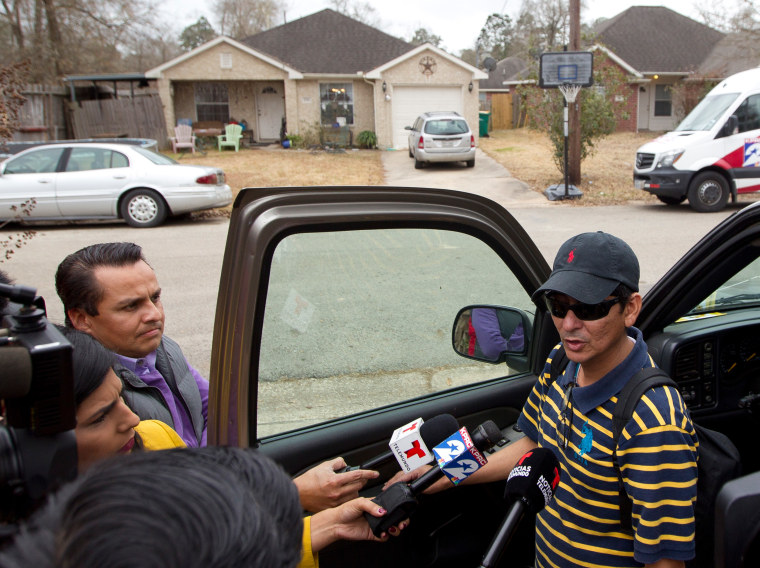
Valladares was found on a couch, shot dead, with his hands bound in duct tape, local police said.
The autopsy report found no evidence of “close range firing” on Valladares’ skin, and the Houston Police Department, which conducted its own investigation, found a shell casing outside the house, far from the window.
“The agent’s account of what occurred was not supported by the physical evidence,” Acevedo said. “To this day, there has been no additional evidence that discredited our investigative findings.”
Federal prosecutors declined to file charges, and a local grand jury declined to indict the agent. The Valladares family said that neither the FBI nor the Justice Department communicated with them after the shooting. Both declined to answer questions about Valladares’ death.
“They are admitting they are guilty through their silence,” said another brother, Juan Carlos Garcia.
A year later, an Atlanta police officer on an FBI task force fatally shot an unarmed Black man. Though the shooting officer was a local cop assigned to work with the FBI, neither federal officers nor their local counterparts wore cameras. Local officers on task forces are bound to federal rules, which at the time still prohibited the use of body cameras.
In response, Atlanta Police Chief Erika Shields took the unusual step of pulling her officers from several federal task forces.
Her move galvanized Acevedo, already angry over the Valladares shooting, who was serving as the leader of Major City Chiefs, an organization of national police leaders. Acevedo rallied other big-city chiefs to threaten to leave task forces if the Justice Department continued to ban body cameras.
The Justice Department relented, announcing in 2020 that local officers serving on federal task forces could use the devices. After Biden took office in 2021, it began allowing its own officers to use them — but only for planned arrests or during the execution of search warrants.
“The federal mentality isn’t one where openness and transparency is at the top of the philosophical repertoire,” Acevedo said. (Acevedo received his own criticism over transparency while he was Houston's police chief.)
Biden tried to tackle the issue further last year in an executive order about police reform, ordering agencies to “issue policies” within 90 days to equip federal officers with body cameras. But he stopped short of ordering their immediate use.
As of this fall, none of the Justice Department’s law enforcement agencies examined by NBC News have fully implemented the use of body cameras. Each agency said it is rolling them out across major cities or divisions, and the Marshals Service has published a map of its current use. The FBI added body-worn camera training to its new agent curriculum at Quantico, Virginia, this year, a spokesperson said. An ATF spokesperson said rollout is “dependent on funding.” The devices are expensive — since 2021, all four agencies have asked Congress for more than $206 million for their body camera programs, according to federal documents. They’ve received slightly over $84 million.
Meanwhile, tensions between local police leaders and federal officials remain. Local agencies that participate in Justice Department task forces can’t release video from such operations, even if their officers are the ones who record it, without permission from the Justice Department, because the video is considered federal record.
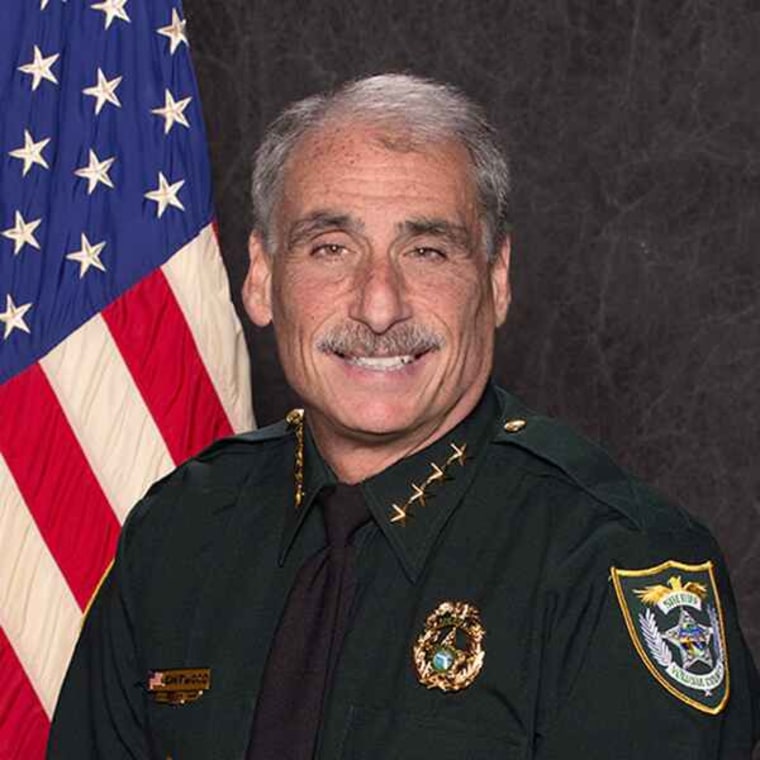
Sheriff Michael Chitwood of Volusia County, Florida, which includes Daytona Beach, doesn’t trust that permission to come quickly. “You are going to tell me when something goes down and the camera is running that you have no right to that footage?” he asked. “F--- you.”
Chitwood pulled his deputies off a U.S. Marshals task force over the issue this year. “My community has a right to see what happens,” he said.
The FBI and the ATF said they release video when the media asks “as soon as practicable” after having reviewed it for redactions. The ATF added that under “exigent circumstances,” it releases video within 72 hours. The Marshals Service and the DEA didn't respond to questions about body camera video.
Little oversight
Limited oversight has helped federal law enforcement agencies resist reform. It wasn’t supposed to be that way.
In the aftermath of the police beating of motorist Rodney King Jr. in Los Angeles in 1991, Congress ordered the Justice Department to collect and publish annual counts of use of excessive force by law enforcement officers, without specifying whether the requirement applied to local or federal agencies, as part of the landmark 1994 crime bill.
Since then, many big-city police departments have begun publishing detailed information about officer-involved shootings. The Justice Department’s Civil Rights Division has also ordered some departments to create searchable electronic databases with use-of-force reports and publish the results of misconduct probes.
But for years, the Justice Department paid little attention to the requirement that it collect and publish excessive force data. The agency did start a number of national data collection efforts over the decades, from household surveys about police interactions to use-of-force frequency, but many of them hit bureaucratic hurdles, compliance issues and delays. None fulfilled the requirement of the 1994 law, according to a 2021 Government Accountability Office report.
“The same government that’s holding state and local agencies accountable isn’t holding their own agencies accountable,” said Acevedo, now the interim police chief in Aurora, Colorado. “That smacks of being disingenuous and a double standard.”
Michael Bromwich, the Justice Department’s inspector general during the late 1990s, said he was never aware that the requirement existed and wasn’t surprised there were few consequences for it’s not being fulfilled. “It’s the product of historical forces where nobody has really said ‘do this or else,’ and it’s not clear what the ‘or else’ is,” Bromwich said.
The 2021 GAO report found that the department didn't have plans to meet the 1994 requirement. Presidents Barack Obama, Donald Trump and Biden have all either signed laws or issued executive orders calling on federal officials to collect and publish more detailed use-of-force or misconduct data, to limited success.
The FBI, which recently launched a long-planned national use-of-force data collection program, told the GAO it wasn’t aware its data was supposed to fulfill the 1994 requirement, and FBI documentation showed it probably couldn't comply because it doesn't differentiate between excessive and acceptable use of force.
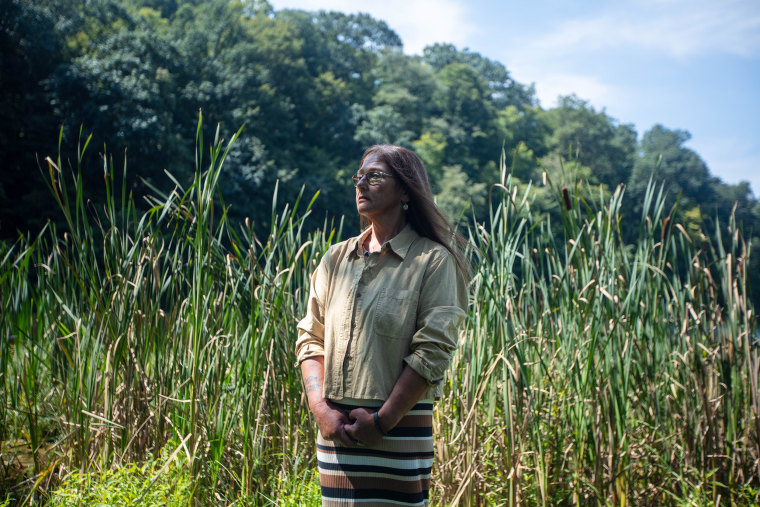
“Where is the accountability?” Gretta L. Goodwin, the director of the GAO’s Homeland Security and Justice team, asked in an interview. “How do you ensure that the officers under your command are engaging in such a way that they are not violating people’s rights?”
The Justice Department releases limited data about shootings by the ATF, the DEA, the FBI and the U.S. Marshals. It began publishing data on arrest-related deaths starting with fiscal year 2016, but its annual report doesn't break down the manner of death by agency.
The FBI launched a national use-of-force database in 2019, which the four agencies report data to, but the public data shows only how many of the Justice Department agencies had “at least one” incident a month.
The marshals’ public shooting review, which covered 147 shootings in three years, included more detail, but it didn’t disclose how many people died in those incidents.
Biden’s executive order last year instructed all federal law enforcement agencies to start tracking various specific data points — including when officers use force and when they engage in misconduct.
A year later, a report from the Leadership Conference on Civil and Human Rights, a national civil rights group, found that work on that had begun but that only two of the 19 directives in Biden's order had been fully accomplished.
A Justice Department spokesman declined to comment on the executive order.
Meanwhile, Ulises Valladares’ family hopes a federal judge will force the FBI to reveal how he died. They want to know how a bound kidnapping victim could die at the hands of officers sent to rescue him.
“The FBI has two faces,” said Fidel Valladares, one of Ulises’ brothers. “They hide things when they do something bad, and when they do something good, they are heroes.”
“They aren’t transparent,” he said. “They aren’t clear. They are hypocrites.”
Hannah Rappleye and Alexandra Chaidez reported from West Virginia. Simone Weichselbaum, Adiel Kaplan and Jean Lee reported from New York.
